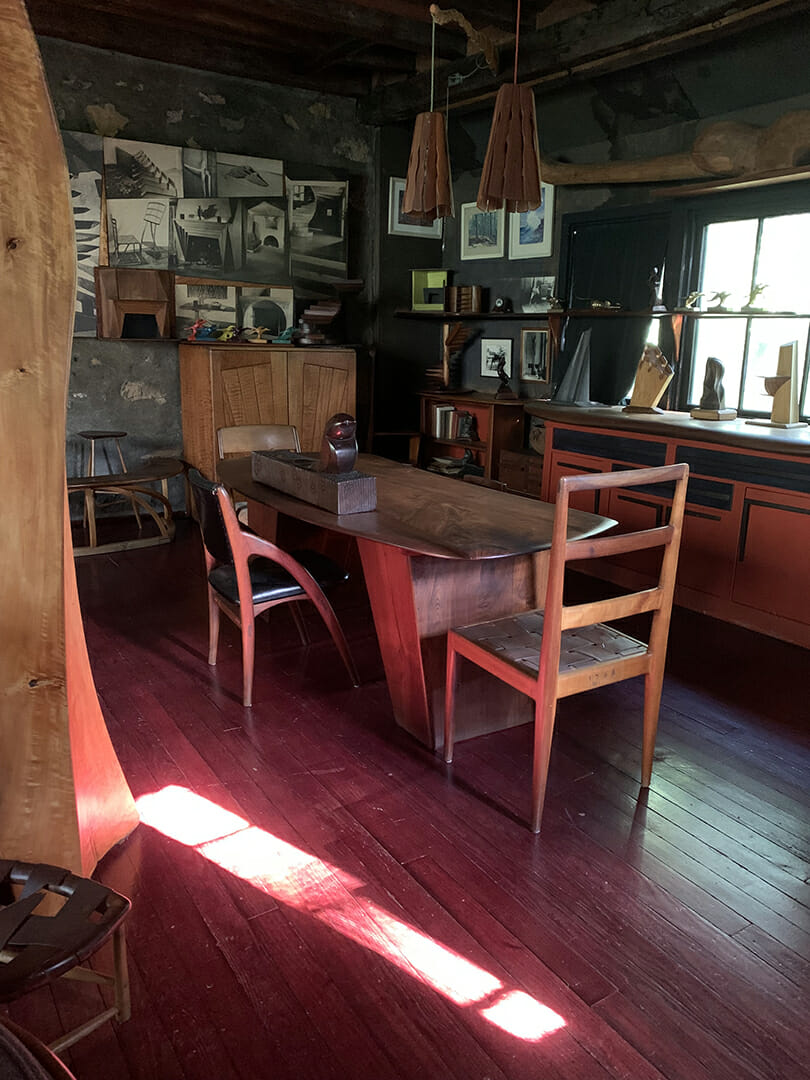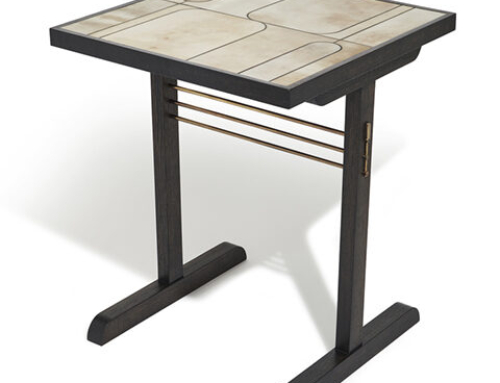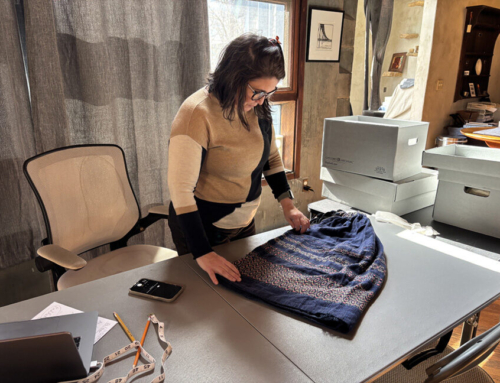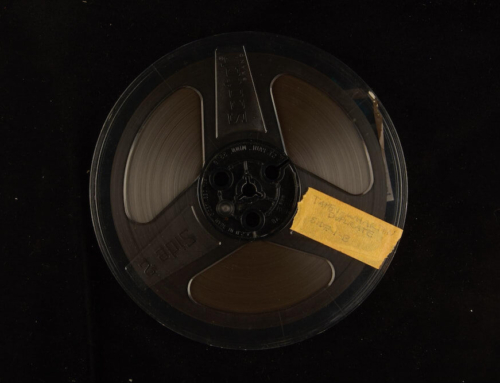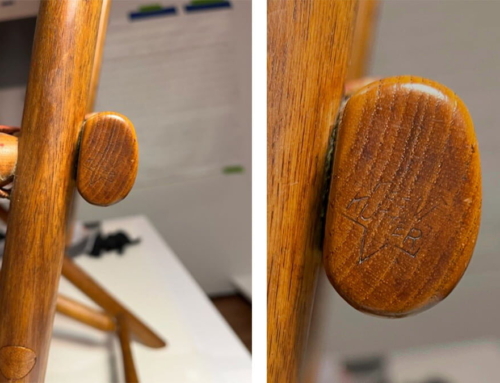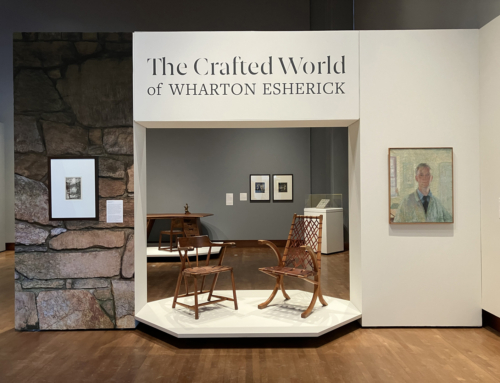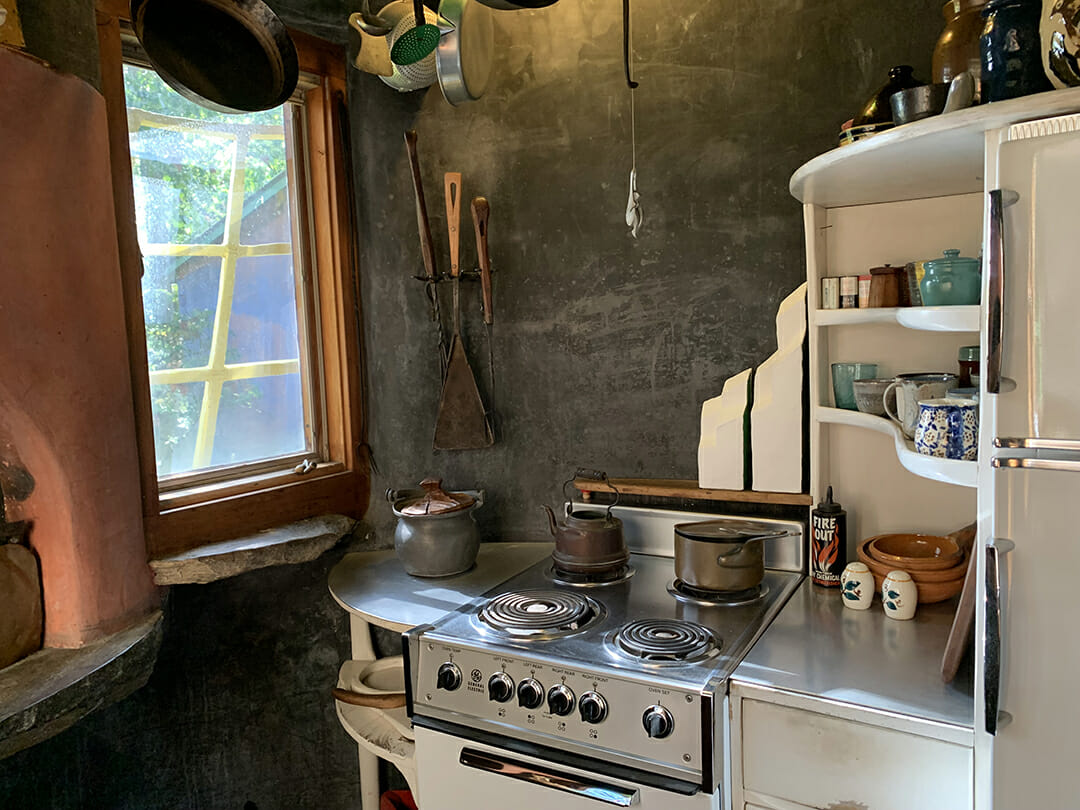
Skewed Grid and Wood Ledge Forms by Artist-in-Residence Roberta Massuch on display in Esherick’s kitchen.
Over the past few months, Esherick Museum guests have experienced the Studio with some new additions: site-specific paper, plaster, and ceramic works by WEM Artist-in-Residence Roberta Massuch. Massuch spent a series of residency days across several months onsite to develop and plan her pieces, which she then fabricated in her Philadelphia studio. This body of work, expressly made for display at the Studio, explores the relationship between light, architecture, and object.
At the heart of Massuch’s interventions is an appreciation for the changing effects of natural light on the spaces of the Studio over the course of time: a day, a month, a season. Adding bold – but often obscured – planes of color to her pieces, several works cast glowing reflections on the surfaces around them and emphasize the interplay between natural light, an object, and the space it inhabits.
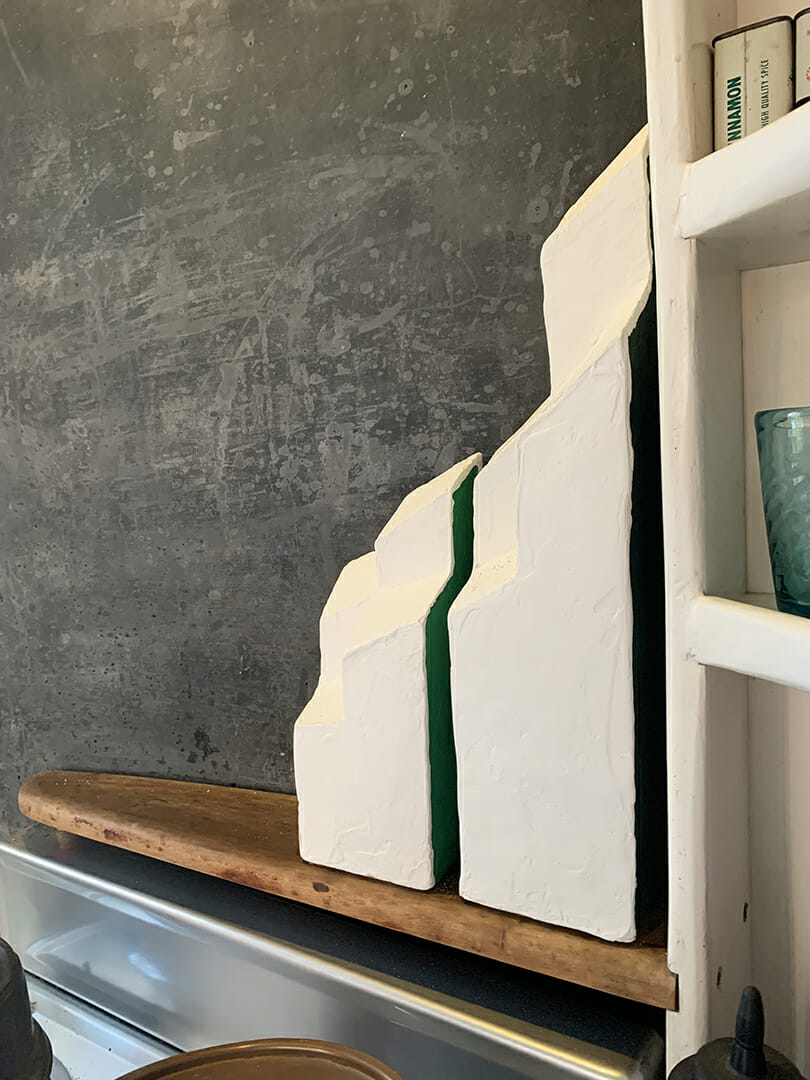
Roberta Massuch, Wood Ledge Forms, Earthenware, venetian plaster, acrylic paint, encaustic wax.
16.5″ x 8″ x 3.5″
As we observe these subtle shifts over the changing seasons, we are reminded of Esherick’s own intentional consideration of light throughout the Studio. In his 1966 silo addition, Esherick included two windows: one over the sink which faces out towards the deck and another to the left of his stove. This one Esherick called his “sunset window,” as it was positioned perfectly to capture a view of the setting sun while he cooked dinner.
Perhaps drawn to the afternoon light in this area, Massuch installed two works near Esherick’s “sunset window.” Skewed Grid, a yellow ceramic sculpture, is installed on the exterior of the window. It simultaneously plays off the panes of other colorful windows around the Studio exterior and the changing, twisting planes found throughout Esherick’s work. Meanwhile, Massuch’s Wood Ledge Forms, a pair of ceramic and plaster sculptures, sit unassumingly on the shelf behind the stove. Formally, they read like an extension of the nearby white shelves that wrap around Esherick’s refrigerator. Solid white, with a nearly hidden plane of green paint in the gap between the forms, Massuch designed these works with the fading light of fall and winter – the seasons she began her residency and her observations in the Studio – in mind. With the sun low in the sky, the light catches and illuminates these hidden green planes.
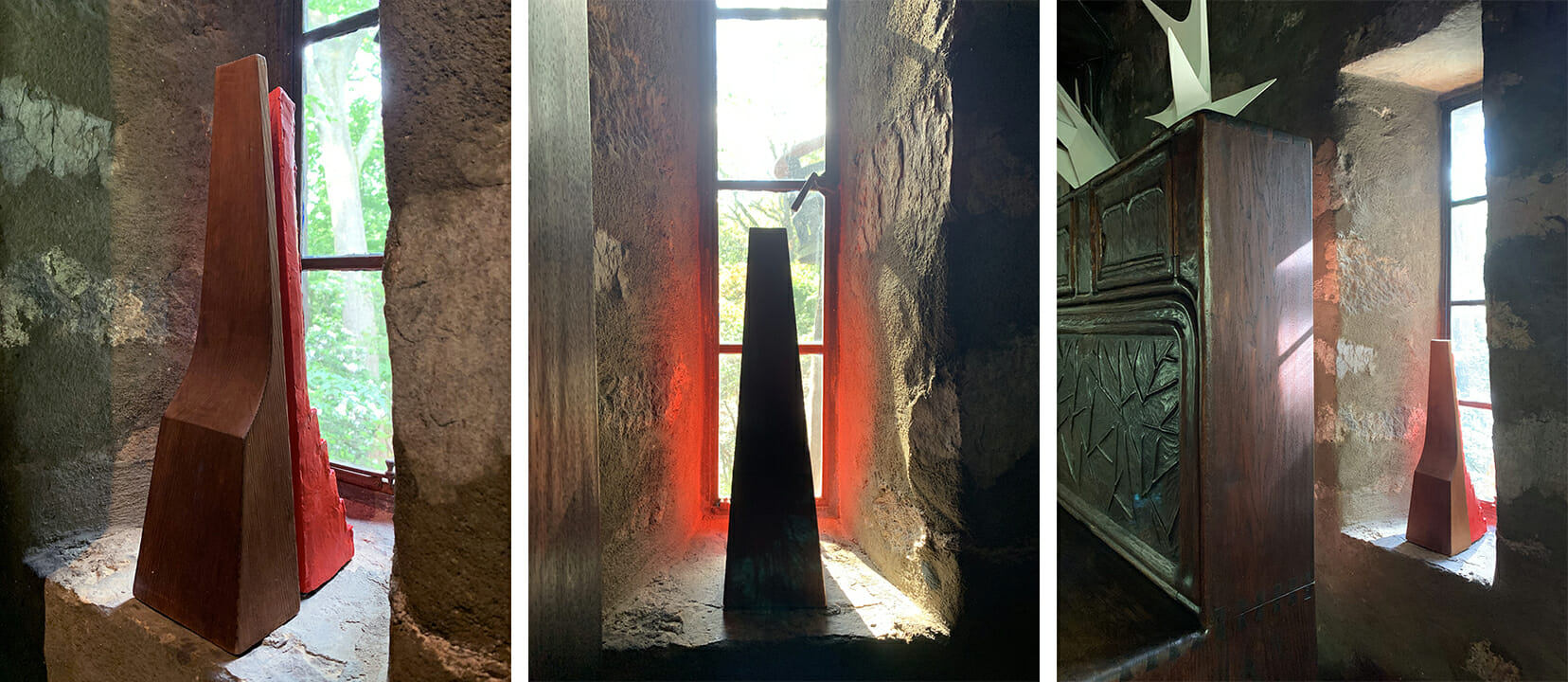
Three views of Massuch’s Stepped Form, Porcelain, acrylic, encaustic wax. 19″ x 4″ x 5″, which casts a red glow on the surrounding architecture.
Down in the gallery Stepped Form casts a similar reflection, this time in red. Massuch designed this piece for the room’s narrow west-facing window, mirroring Esherick’s pine Chimney Model in shape and scale. Placed directly behind Esherick’s original, Stepped Form — particularly on a sunny day — sets off a red aura on the close stone walls of the recessed window.
Attuned to the glow Massuch introduces to the space, similar red highlights around the room are drawn forward. The red entryway walls, the stain for the floor reflecting at the base of the furniture. Esherick even painted the back of his Drop Leaf Desk red, which casts its own subtle glow onto the stone Studio walls. It is these rhythms and repetitions that expand Massuch’s work beyond the ceramic and plaster pieces themselves, drawing the eye around the room and rewarding the patient observer.
We have a tradition at the Esherick Museum: On the winter solstice, we head to the Studio entryway to watch for a circle of light that shines through a hole in Esherick’s front door. The light coming through creates a pinhole camera effect and in this little annual projection one can make out the upside-down outline of the trees outside and their movement in the breeze. Was it intentional? We have no way to be sure. Yet the experience of viewing it, and appreciating its fleeting presence, brings us in touch with so much: with Esherick’s Studio, with the surrounding hillside where he made his home, and with the many contemplative and creative moments he spent in this space.
Massuch’s work will remain on view through the end of the year. This winter, we’ll be watching patiently to see what reflections and connections are revealed, and what interactions appear, as the earth journeys around the sun and our environment and experience of light and space continues to change. We hope you’ll join us.

A small hole in Esherick’s front door creates a “pinhole camera effect” on his entryway step, projecting an upside-down image of the woods outside.
View works from Robert Massuch: Artist-in-Residence here.
To visit the Museum and view Roberta’s work in person, you must make advance reservations for a tour. Learn more about visiting, and our Covid Safety Guidelines, here.
Post written by Communications and Public Programs Director Katie Wynne.
September 2021

